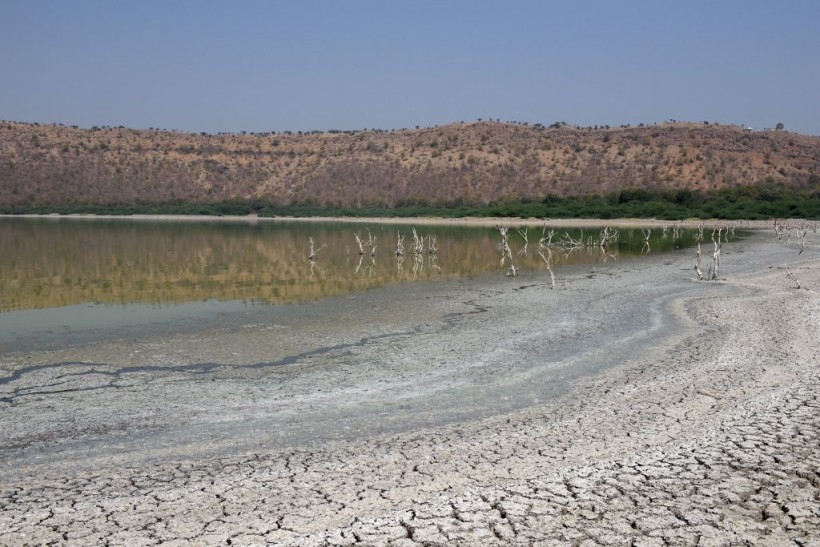A recent study has presented convincing findings that suggest the presence of the largest known asteroid impact structure in the world.

(Photo : ALEX OGLE/AFP via Getty Images)
This photo taken on February 19, 2019, shows the Lonar Crater and its saline lake in India's Maharashtra state, the remnant of an asteroid impact around 50,000 years ago. - The Lonar Crater is unique as the world's only hyper velocity impact crater in basalt rock, and has become a key area for investigations into the geology of the underlying Deccan Traps.
Revealing Massive Asteroid Impact Structure
Located deep within the southern region of New South Wales, Australia, Interesting Engineering reported that the Deniliquin structure spans an astounding diameter of 520 kilometers. This discovery raises the possibility of surpassing the current record-holder, the Vredefort impact structure in South Africa, which measures around 300 kilometers in width.
Throughout history, both the Australian continent and its ancestral entity Gondwana have encountered numerous interactions with asteroids. This latest finding contributes to a compilation that comprises a minimum of 38 verified and 43 potential impact formations, encompassing a range from minor craters to extensive, concealed structures.
Co-author Andrew Glikson, holding the position of Adjunct Professor at UNSW Sydney, drew a parallel in a recent piece for The Conversation. He likened the progression to dropping a pebble into a pond, where the initial impact generates a central dome akin to the ripples produced by the pebble's splash.
Undergoing Erosion
Yet, with the passage of time, this central dome might undergo erosion or become obscured beneath layers of history. These enduring central domes, vestiges of impacts dating back eons, offer essential insights into the planet's eventful past.
Notable instances such as the Vredefort impact structure and the Chicxulub crater, responsible for the extinction of dinosaurs, vividly underscore the profound and enduring consequences of these primordial cosmic clashes.
Also Read: This New Algorithm Identifies Its First Potentially Hazardous Asteroid
Similar attributes align with those seen at significant impact sites globally, highlighting the potential significance of the Deniliquin structure. However, Futurism reported that the establishment of conclusive evidence of impact rests upon tangible proof-evidence that can only be unearthed through thorough deep drilling.
In the eastern region of the ancient Gondwana supercontinent lies a prospective impact site that could unlock a mystery spanning hundreds of millions of years. There's a likelihood that the formation of the Deniliquin structure might have transpired during the Late Ordovician mass extinction event, coinciding with the Hirnantian glaciation stage.
Previous Studies
The account of the recently discovered impact structure in southeastern Australia originates from the work of Tony Yeates. Between 1995 and 2000, The Conversation reported that Yeates detected intriguing magnetic patterns beneath the Murray Basin in New South Wales.
These patterns suggested the presence of a concealed impact structure of substantial magnitude. A more recent examination of updated geophysical information spanning from 2015 to 2020 has significantly fortified Yeates' conjectures. This analysis unveiled a vast structure with a diameter of 520 kilometers, featuring a central seismic dome at its core.
Related Article: How to Stop Asteroid Impact? DART is Not the Only Way to Save Earth; Here are Other Solutions










